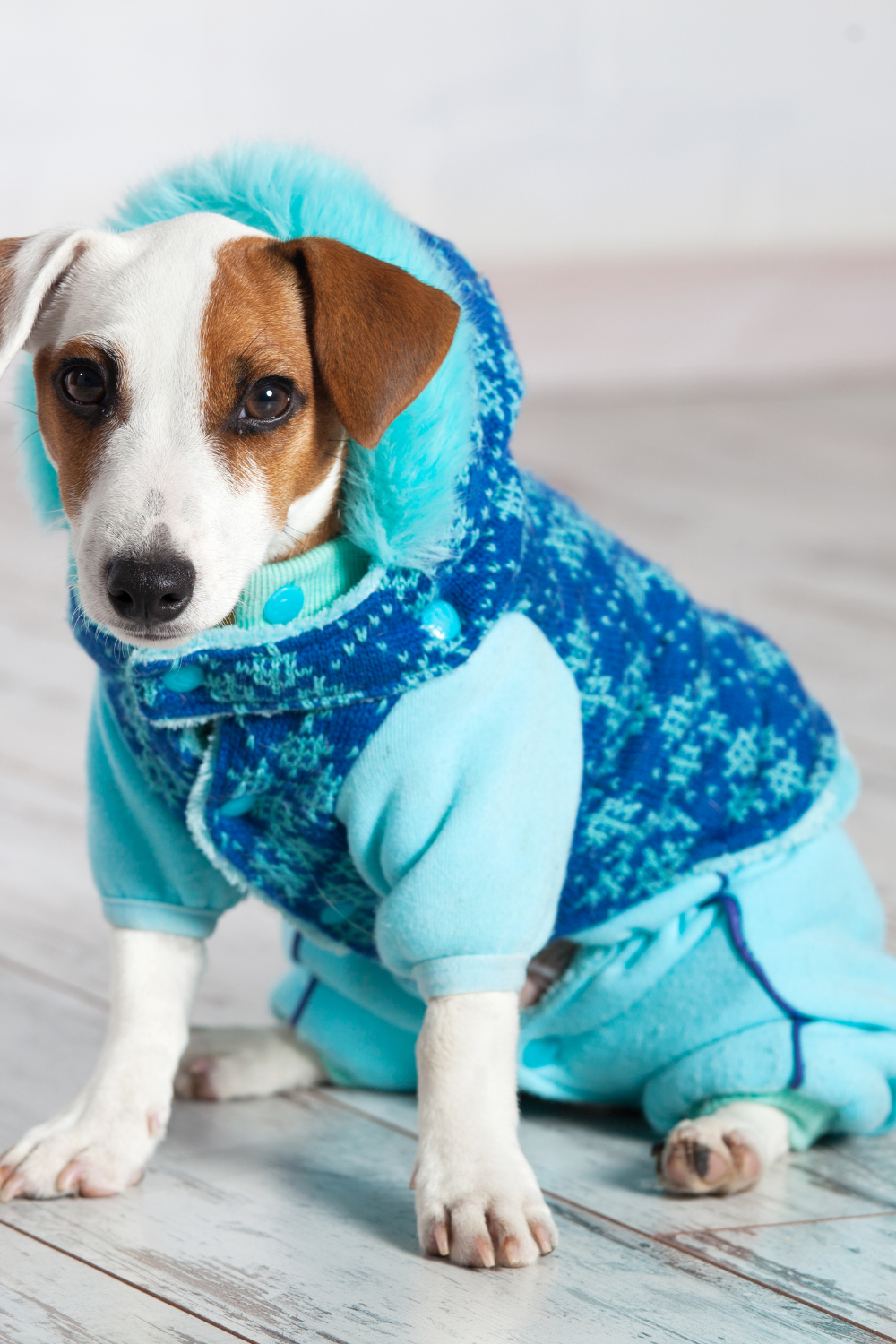Winter brings magical snowscapes and cozy nights by the fire. But for dog owners, it also brings a crucial question: how do I keep my furry friend safe when temperatures drop?
Your dog winter care safety depends on more than just a warm coat.
From understanding temperature thresholds to choosing the right gear, this guide covers everything you need to protect your pup during the coldest months.
Table of Contents
- Understanding Your Dog’s Cold Weather Tolerance
- Temperature Thresholds: When Cold Becomes Dangerous
- Signs of Cold Weather Stress in Dogs
- Essential Winter Gear for Dogs
- How to Keep Your Dog Warm in an Outside Kennel
- Keeping Dogs Warm During Winter Outdoor Activities
- Nighttime Warmth: Indoor Strategies
- Cold Weather Champions: Top Breeds That Thrive
- Extreme Cold Weather Dogs and Special Considerations
- Health Risks and Side Effects of Cold Weather
- Winter Safety Checklist
- Frequently Asked Questions
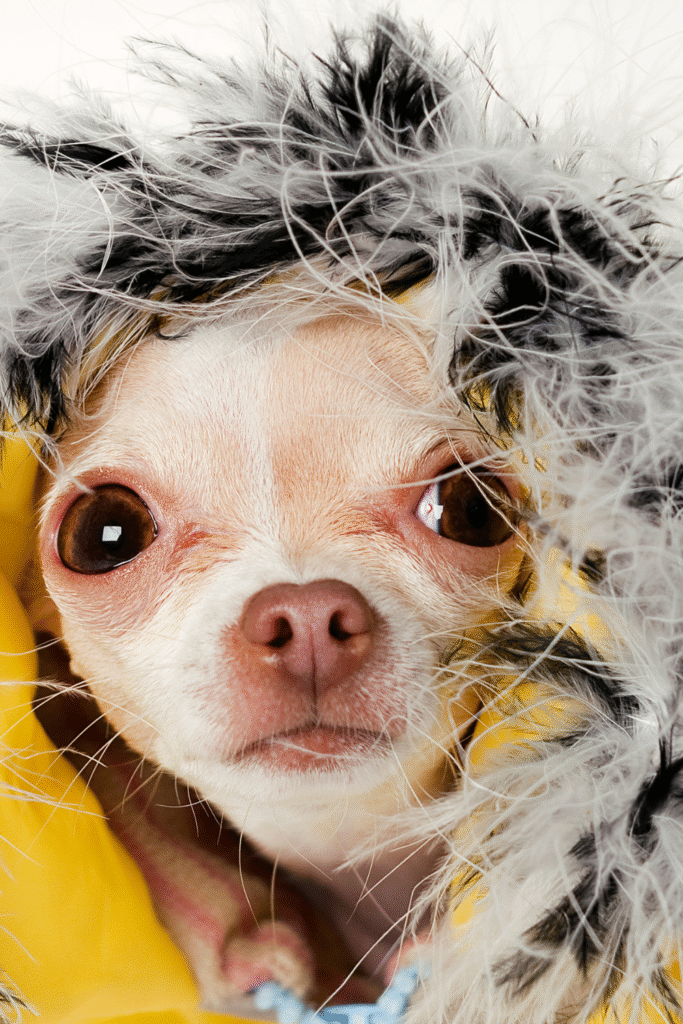
Understanding Your Dog’s Cold Weather Tolerance {#understanding-tolerance}
Every dog has a unique tolerance for cold weather, influenced by factors such as breed, size, age, coat type, and overall health.
While some breeds are naturally equipped to handle colder climates due to thick fur or robust body composition, others may struggle to stay warm even in mild winter conditions.
It is essential to closely monitor your dog’s behavior for signs of discomfort, such as shivering, reluctance to move, or seeking shelter, to ensure their safety and well-being during chilly weather.
Not all dogs handle winter the same way. Your Siberian Husky might roll in snow while your Chihuahua shivers at 50°F.
Several factors determine your dog’s cold tolerance:
Size and Body Mass: Smaller dogs lose heat faster than larger dogs. Their higher surface area to body mass ratio means they need extra protection.
Coat Type: Double-coated breeds like German Shepherds have natural insulation. Single-coated or hairless breeds need human help staying warm.
Age: Puppies and senior dogs struggle more with temperature regulation. Their bodies work harder to maintain core temperature.
Health Status: Dogs with arthritis, diabetes, or heart conditions face higher risks in cold weather.
Acclimation: Dogs gradually exposed to cooler temperatures adapt better than those suddenly thrust into winter conditions.

Temperature Thresholds: When Cold Becomes Dangerous {#temperature-thresholds}
Understanding temperature limits prevents dangerous exposure. Here’s what research shows about safe outdoor temperatures for dogs:
| Temperature Range | Small Dogs (Under 25 lbs) | Medium Dogs (25-60 lbs) | Large Dogs (Over 60 lbs) |
|---|---|---|---|
| Above 45°F | Safe for extended periods | Safe for extended periods | Safe for extended periods |
| 32-45°F | Limit to 30-45 minutes | Safe for 1-2 hours | Safe for extended periods |
| 20-32°F | Limit to 15-30 minutes | Limit to 30-60 minutes | Safe for 1-2 hours |
| Below 20°F | Dangerous – minimize exposure | Limit to 15-30 minutes | Limit to 30-60 minutes |
| Below 0°F | Life-threatening | Dangerous – minimize exposure | Limit to 15-30 minutes |
What temperature is too cold for dogs to sleep outside? Most veterinarians agree that temperatures below 20°F pose serious risks for overnight outdoor stays, regardless of breed size.
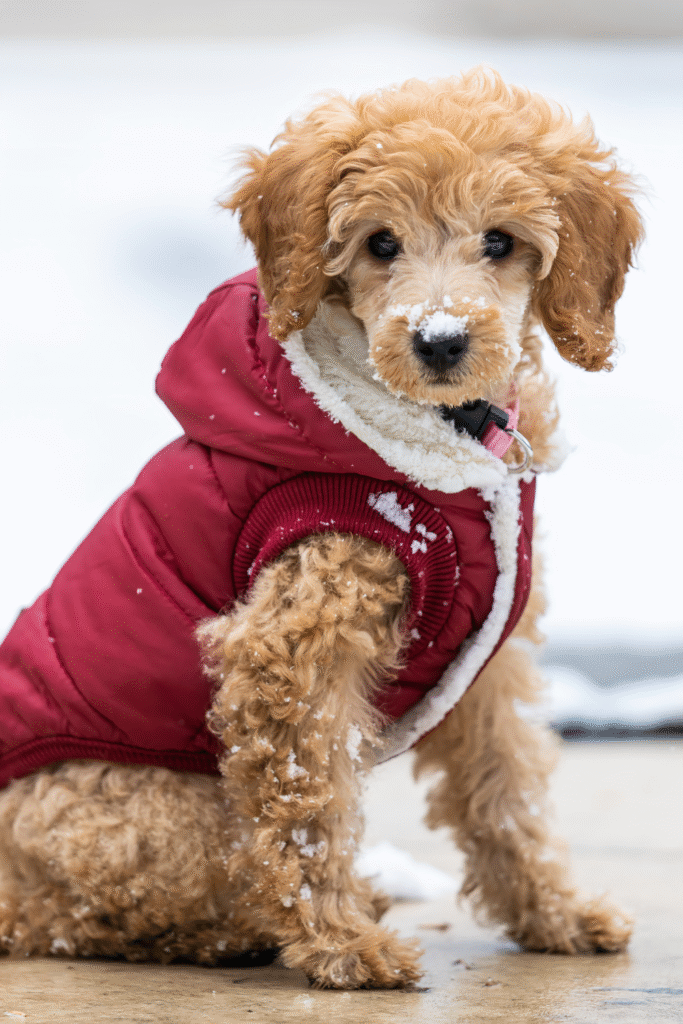
Signs of Cold Weather Stress in Dogs {#cold-stress-signs}
Signs of cold weather stress in dogs can range from subtle to severe. Common indicators include shivering, lethargy, whimpering, or seeking warm shelter.
You may also notice that your dog’s ears, tail, or paws feel unusually cold to the touch.
Prolonged exposure to freezing conditions can lead to frostbite and hypothermia, which are life-threatening situations requiring immediate veterinary care.
Always monitor your dog closely during cold weather and take steps to keep them warm and comfortable.
Recognizing early warning signs prevents serious cold-related injuries. Watch for these symptoms:
Immediate Warning Signs
- Shivering or trembling
- Lifting paws frequently
- Whimpering or showing distress
- Seeking shelter or trying to go inside
- Hunched posture
Advanced Symptoms Requiring Immediate Action
- Lethargy or weakness
- Shallow breathing
- Muscle stiffness
- Ice formation on fur
- Blue-tinged gums or tongue
Side Effects of Cold Weather on Dogs
Prolonged cold exposure creates several health risks:
Hypothermia: Core body temperature drops below 99°F. Early signs include shivering and lethargy. Severe cases cause unconsciousness.
Frostbite: Extremities like ears, tail, and paw pads freeze. Affected areas appear pale or blue, then red and swollen when warming.
Dehydration: Cold air is dry air. Dogs need consistent water access even in winter.
Joint Stiffness: Cold weather worsens arthritis symptoms and joint pain.
Cracked Paw Pads: Salt and ice create painful splits in paw pad skin.
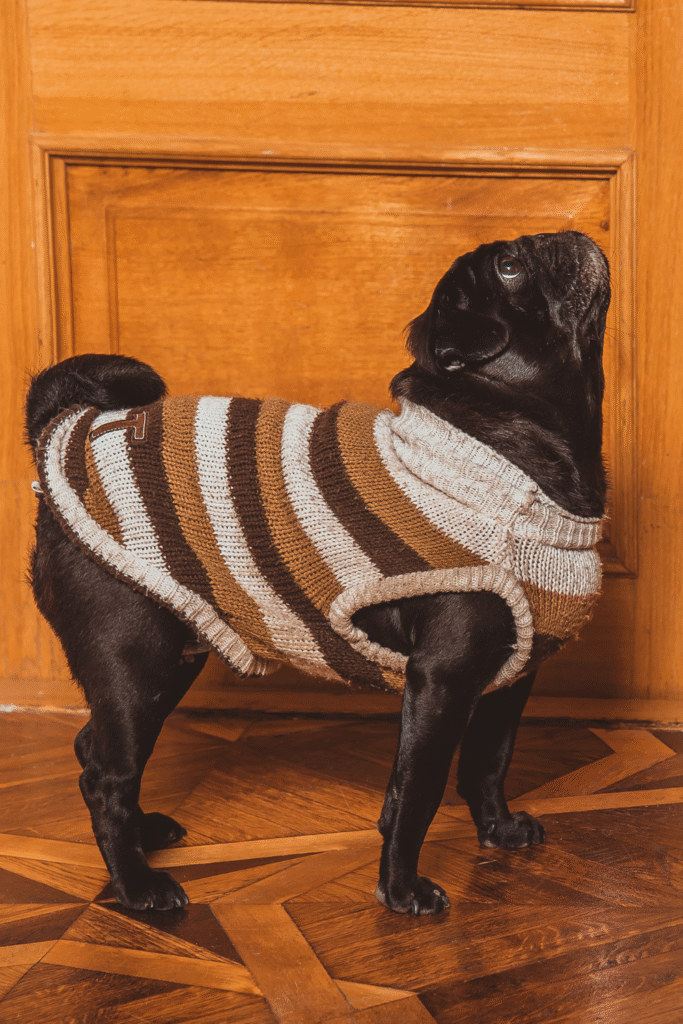
Essential Winter Gear for Dogs {#essential-gear}
Proper winter gear can make a significant difference in keeping your dog safe and comfortable during cold weather.
A well-fitted dog coat or sweater made of insulating materials helps maintain body heat, especially for smaller breeds or those with short fur.
Additionally, paw protectors or booties can shield sensitive pads from harsh salt, ice, and freezing surfaces, preventing injuries and discomfort.
The right equipment makes winter enjoyable rather than endurable. Here’s your gear checklist:
Winter Coats and Sweaters
Waterproof Outer Layer: Choose coats with water-resistant outer shells. Wet fur loses insulation value quickly.
Insulation Layer: Look for coats with synthetic fill or fleece lining. Down alternatives work better in wet conditions.
Proper Fit: Measure your dog’s chest, neck, and back length. Coats should cover from neck base to tail base without restricting movement.
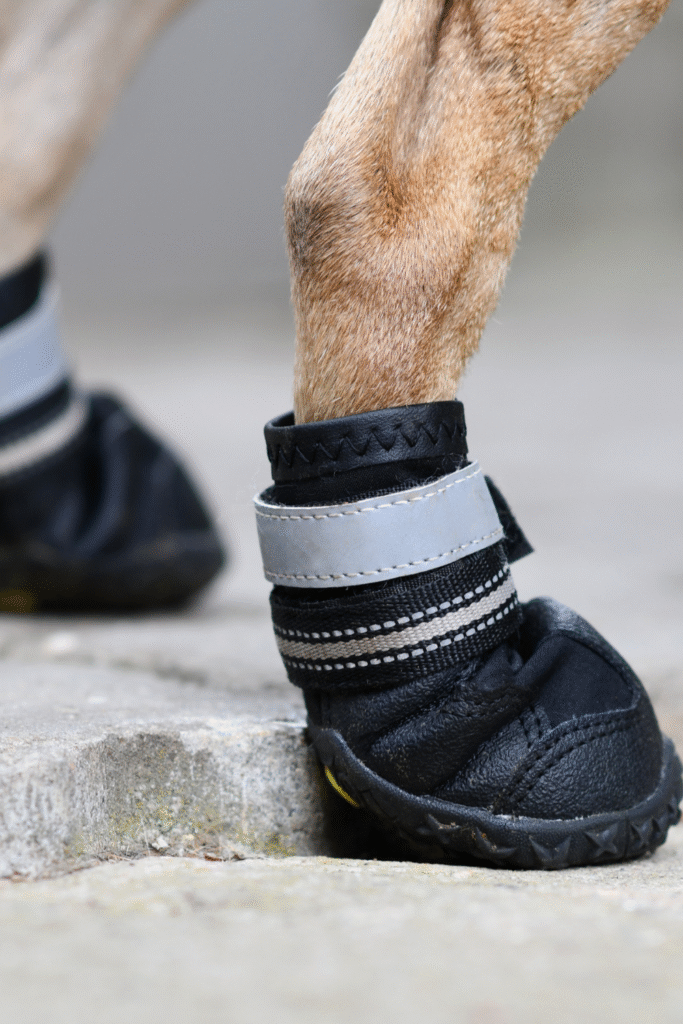
Paw Protection
Dog Boots: Protect against salt, ice, and sharp frozen surfaces. Start with short wearing sessions to help your dog adjust.
Paw Balm: Apply protective balms before walks. These create barriers against salt and moisture.
Booties Alternative: Mushers’ wax provides protection without the adjustment period boots require.
Additional Accessories
Reflective Gear: Winter days are shorter. Reflective vests improve visibility during dawn and dusk walks.
Warm Bedding: Elevated beds prevent cold transfer from floors. Add blankets for extra warmth.
Travel Gear: Car seat covers and travel blankets maintain warmth during transport.
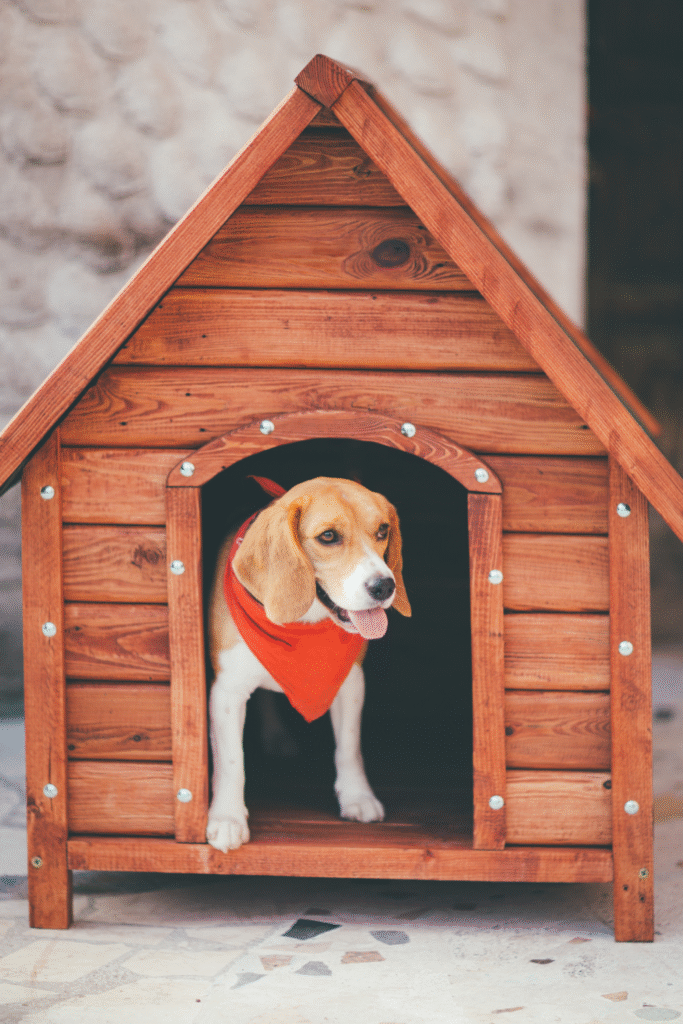
How to Keep Your Dog Warm in an Outside Kennel {#outside-kennel-warmth}
Providing insulation is key to keeping your dog comfortable in an outside kennel during cold weather.
Line the kennel walls, floor, and ceiling with materials such as foam or straw to help retain heat.
Ensure the kennel is elevated off the ground to prevent cold and dampness from seeping in.
Adding a flap over the entrance can block drafts while still allowing easy access.
Additionally, supply your dog with weather-resistant bedding that is easy to clean and stays warm even when damp.
Regularly check the kennel to ensure it remains dry and free from damage caused by extreme weather conditions.
Some dogs spend significant time in outdoor kennels. These strategies maintain safe temperatures:
Kennel Preparation
Size Matters: Kennels should be large enough for standing and turning but small enough to retain body heat.
Insulation: Add straw or hay for natural insulation. Avoid blankets that freeze when wet.
Wind Protection: Position kennels away from prevailing winds. Add windbreaks if necessary.
Elevated Flooring: Raise kennel floors above ground level to prevent cold transfer.
Heating Solutions
Heated Beds: Electric heated beds designed for outdoor use provide consistent warmth.
Heat Lamps: Ceramic heat emitters warm kennel spaces without light disruption.
Igloo-Style Shelters: These designs naturally retain body heat while blocking wind.
Important Safety Note: All electrical heating elements must be designed for outdoor pet use and properly protected from chewing.
Keeping Dogs Warm During Winter Outdoor Activities {#outdoor-activities}
Proper layering is essential for keeping dogs warm during winter outdoor activities.
Dog sweaters or coats made of insulated, weatherproof materials can provide an extra layer of protection against the cold.
For dogs with shorter fur or those more vulnerable to low temperatures, booties can help protect their paws from ice, snow, and salt while maintaining body heat.
Always ensure that clothing fits comfortably and does not restrict movement, and monitor your dog’s behavior for signs of discomfort or cold stress.
Winter activities keep dogs mentally stimulated and physically fit. These strategies ensure safe outdoor fun:
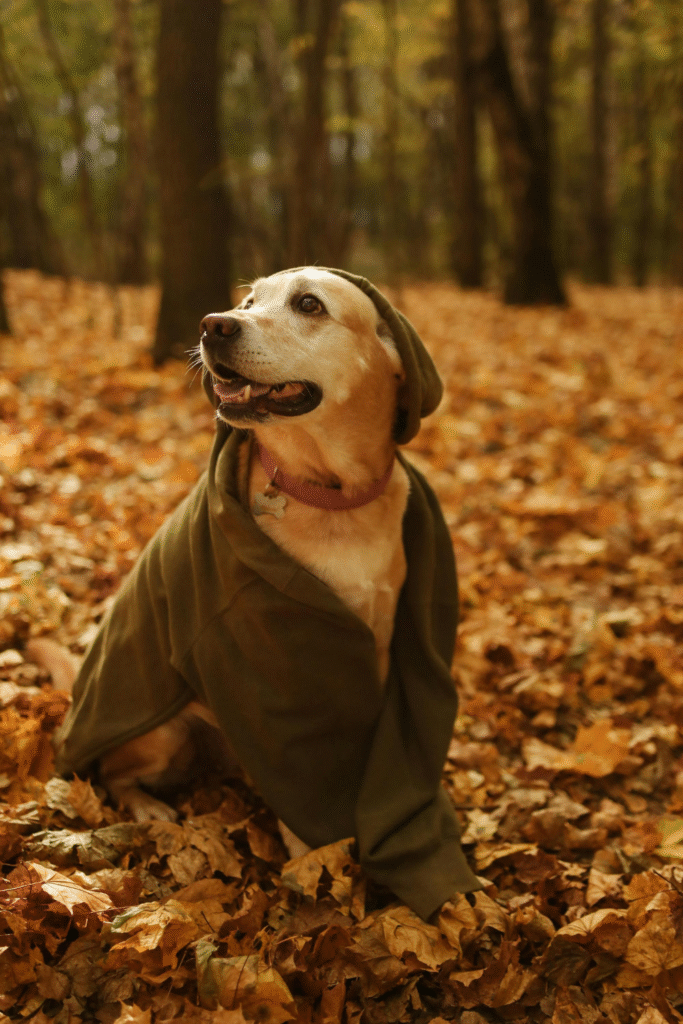
Pre-Activity Preparation
Gradual Exposure: Build cold tolerance gradually. Start with shorter sessions and increase duration over time.
Proper Gear: Fit coats and boots before heading outside. Check fit and comfort.
Energy Boost: Feed dogs 30 minutes before extended outdoor time. Digestion generates internal heat.
During Activities
Monitor Behavior: Watch for signs of cold stress. Head inside immediately if symptoms appear.
Stay Moving: Keep activities active. Standing still allows body temperature to drop quickly.
Check Extremities: Periodically check ears, paws, and tail tip for signs of frostbite.
Post-Activity Care
Warm, Dry Towels: Remove moisture immediately after coming inside.
Gradual Warming: Allow dogs to warm up naturally. Avoid direct heat sources that can cause burns.
Paw Care: Clean and dry paws thoroughly. Check for cuts or irritation.

Nighttime Warmth: Indoor Strategies {#indoor-nighttime}
Ensure your dog has a warm and comfortable sleeping area during cold nights.
Use insulated bedding or blankets to retain heat, and consider elevated beds to keep your pet off cold floors.
If necessary, use a safe, pet-approved heating pad or a heat-reflective mat to provide extra warmth without risk of overheating.
Even indoor dogs need extra warmth during cold nights. These strategies help:
Sleeping Arrangements
Elevated Beds: Keep sleeping surfaces off cold floors. Dog cots work well for this purpose.
Draft Elimination: Check for air leaks near sleeping areas. Seal gaps that let cold air inside.
Room Selection: Choose sleeping areas away from exterior walls and windows.
Additional Warmth Sources
Extra Blankets: Layer blankets for adjustable warmth levels.
Heated Beds: Indoor heated beds provide consistent, safe warmth throughout the night.
Body Heat: Some dogs appreciate sharing sleeping spaces with other pets or family members.
How to Keep Your Dog Warm at Night Inside
Sweaters for Indoor Use: Lightweight sweaters help small or short-haired breeds maintain body temperature.
Warming Mats: Place warming mats under regular beds for gentle heat.
Proper Bedding: Fleece and wool materials retain heat better than cotton.
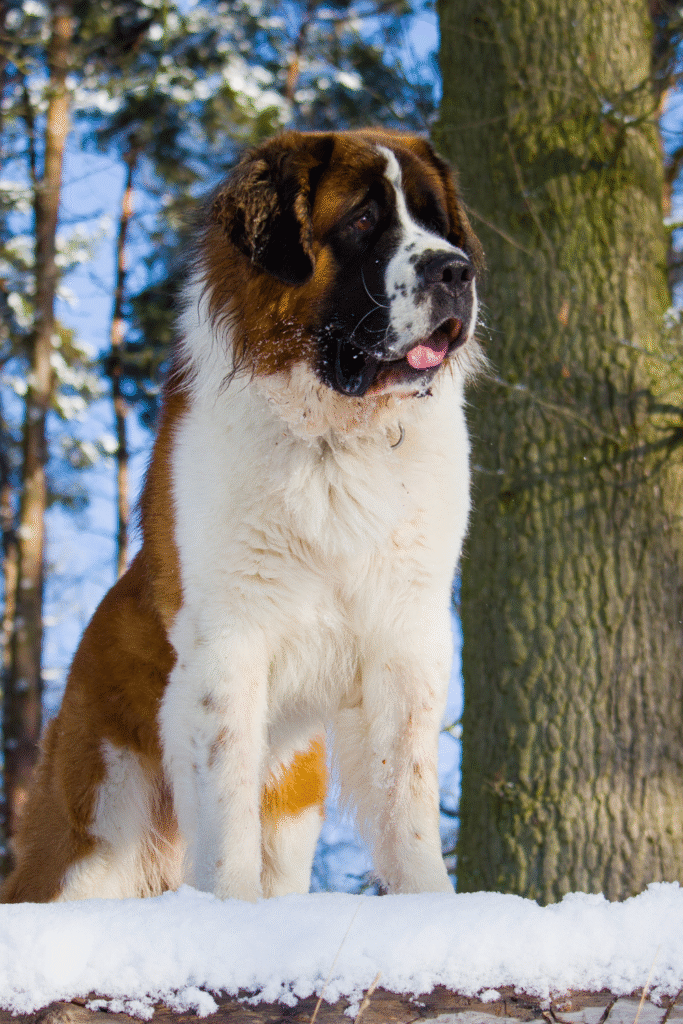
Cold Weather Champions: Top Breeds That Thrive {#cold-weather-breeds}
Certain dog breeds are naturally equipped to handle cold weather thanks to their thick double coats and robust builds.
Breeds such as Siberian Huskies, Alaskan Malamutes, and Saint Bernards are excellent examples of cold-weather champions.
These dogs have physical adaptations like dense fur, large paws for traction, and a higher resistance to lower temperatures, making them well-suited for snowy or icy environments.
Some breeds were literally built for cold weather.
Understanding breed differences helps you plan appropriate winter care.
Top 10 Cold Weather Dogs
- Siberian Husky: Bred for Arctic conditions with double coats and efficient metabolism
- Alaskan Malamute: Powerful build and thick coat handle extreme cold
- Saint Bernard: Dense coat and large body mass provide natural insulation
- Newfoundland: Water-resistant coat and webbed feet excel in cold, wet conditions
- Great Pyrenees: Thick double coat developed for mountain guarding in harsh weather
- Bernese Mountain Dog: Long, silky coat and sturdy build handle Swiss Alpine conditions
- Norwegian Elkhound: Compact build and dense coat withstand Scandinavian winters
- Keeshond: Thick, plush coat and fox-like tail that curls over the back for warmth
- Chow Chow: Extremely dense double coat provides excellent cold protection
- Akita: Dense undercoat and guard hairs create superior insulation
Breed-Specific Considerations
Even cold-weather breeds need monitoring. Age, health, and individual variation affect cold tolerance within breeds.
Double-Coated Breeds: Never shave these dogs in winter. Their coat system requires both undercoat and guard hairs to function properly.
Working Breeds: Many cold-weather dogs were bred for active work. They need exercise even in cold conditions.
Grooming Needs: Regular brushing maintains coat efficiency. Matted fur loses insulation properties.
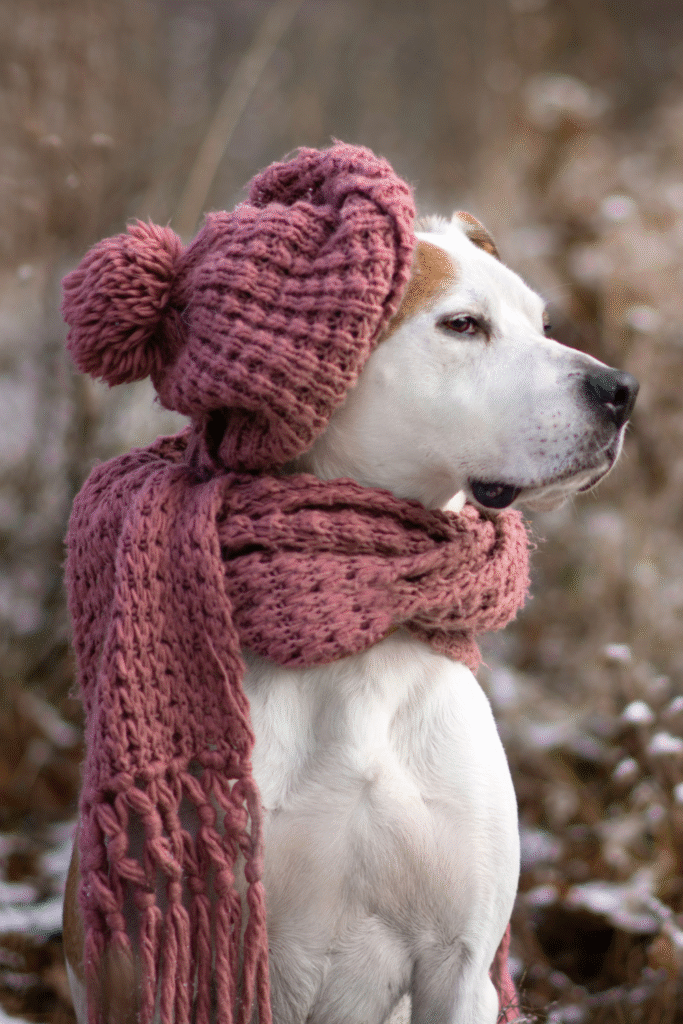
Extreme Cold Weather Dogs and Special Considerations {#extreme-cold-dogs}
Dogs living in extreme cold weather conditions may require additional measures to ensure their well-being.
Providing insulated dog houses, heated beds, and proper shelter from harsh winds can help protect them from the elements.
Additionally, their diet may need adjustments to include more calories to maintain energy and body heat during colder months.
Regular checkups with a veterinarian are also essential to monitor their health and address any specific needs related to cold exposure.
Some dogs face extreme cold conditions through work, location, or lifestyle choices. These situations require advanced preparation:
Working Dogs in Extreme Conditions
Sled Dogs: Mushers use specialized care including high-fat diets, straw bedding, and rotating team members.
Search and Rescue: Working dogs need booties, emergency warming protocols, and regular temperature monitoring.
Farm Dogs: Livestock guardian dogs require windproof shelters and supplemental feeding during extreme weather.
Extreme Cold Survival Strategies
Caloric Increases: Dogs in extreme cold need 25-50% more calories to maintain body temperature.
Hydration Monitoring: Provide unfrozen water sources constantly. Dehydration accelerates in extreme cold.
Emergency Protocols: Have warming plans ready. Know symptoms of severe hypothermia and emergency veterinary contacts.
Special Equipment for Extreme Conditions
Arctic-Rated Gear: Military-grade coats and extreme weather boots for professional working dogs.
Heated Shelters: Insulated doghouses with safe heating systems for extended outdoor stays.
Emergency Supplies: Thermal blankets, warming packs, and emergency food supplies.

Health Risks and Side Effects of Cold Weather {#health-risks}
Cold weather poses several health risks to dogs, including frostbite and hypothermia, which can develop rapidly in extreme conditions.
Prolonged exposure to low temperatures may also worsen existing health conditions such as arthritis or respiratory issues.
It’s essential to monitor your dog’s behavior and physical condition closely, watching for signs such as shivering, lethargy, or difficulty walking, which could indicate the onset of cold-related health problems.
Cold weather creates specific health challenges. Understanding these risks helps you protect your dog:
Respiratory Issues
Kennel Cough: Cold, dry air irritates respiratory passages. Increased risk in boarding or daycare situations.
Asthma Triggers: Dogs with breathing issues may experience worsened symptoms in cold air.
Prevention: Limit exposure duration and consider humidifying indoor air.
Skin and Coat Problems
Dry Skin: Low humidity causes itchy, flaky skin. Increase omega fatty acids in diet.
Static Electricity: Dry air creates static in coats. Use anti-static sprays designed for pets.
Hot Spots: Constant licking of irritated paws can create infected areas.
Joint and Mobility Issues
Arthritis Flares: Cold weather worsens joint stiffness and pain in senior dogs.
Muscle Stiffness: Cold muscles are more prone to injury during exercise.
Management: Maintain gentle exercise routines and consider joint supplements.
Digestive Changes
Increased Appetite: Dogs need more calories to maintain body temperature.
Water Consumption: Monitor for adequate hydration despite reduced thirst drive.
Stomach Sensitivity: Some dogs experience digestive upset from dietary changes needed for cold weather.
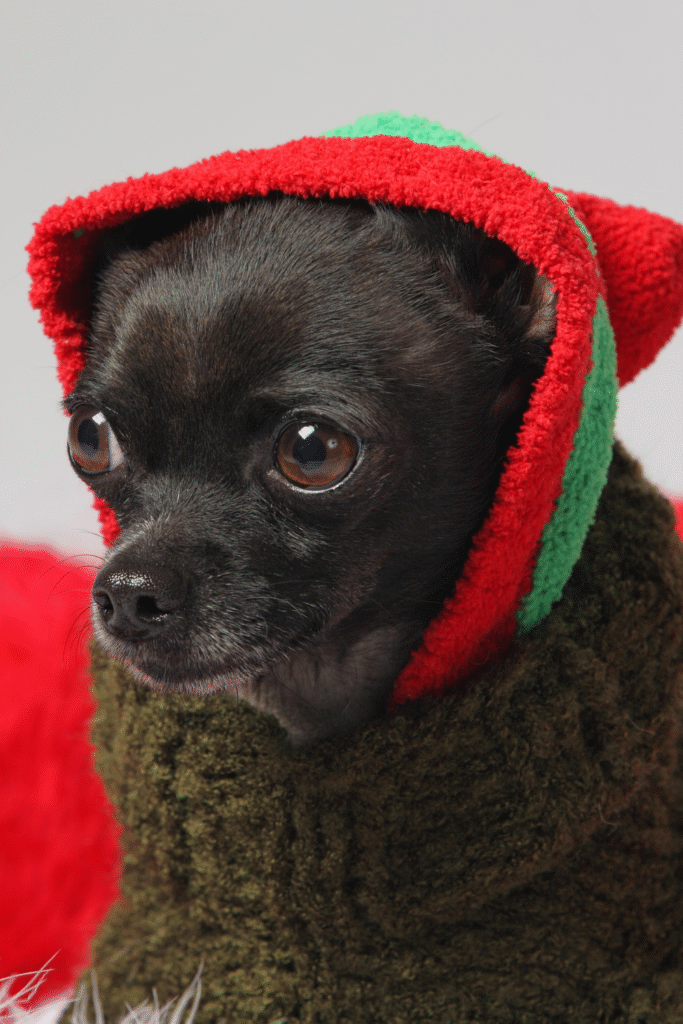
Winter Safety Checklist {#safety-checklist}
Paw Care
Protection Against Cold Surfaces: Prolonged exposure to snow, ice, or salted roads can damage paw pads.
Management: Use dog booties for protection or apply a paw balm to create a barrier.
Regularly check and clean paws after outdoor walks to remove any debris or salt that may cause irritation.
Use this comprehensive checklist to ensure complete winter preparedness:
Before Winter Arrives
- Veterinary checkup focusing on joint health and overall condition
- Purchase properly fitted winter gear (coats, boots, blankets)
- Prepare outdoor shelter with insulation and heating if needed
- Stock emergency supplies (blankets, warming packs, extra food)
- Test all heating equipment for safety and function
Daily Winter Care
- Check weather conditions before outdoor activities
- Apply paw protection balm before walks
- Monitor dog for cold stress symptoms during outdoor time
- Clean and dry paws thoroughly after each outing
- Provide fresh, unfrozen water constantly
Weekly Assessments
- Inspect gear for damage or wear
- Check paw pads for cracks or irritation
- Assess body condition and weight
- Review and adjust exercise routines for weather conditions
- Clean and maintain heating equipment
Emergency Preparedness
- Know emergency veterinary contact information
- Keep emergency warming supplies accessible
- Understand hypothermia and frostbite symptoms
- Have transportation plan for weather emergencies
- Maintain emergency food and water supplies
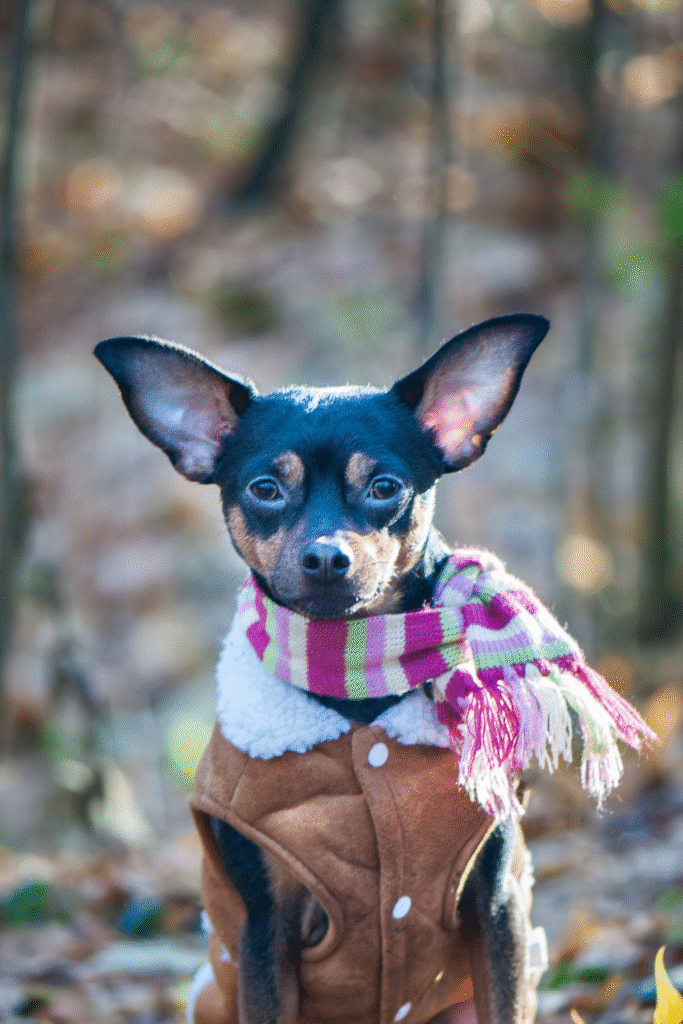
Frequently Asked Questions {#faqs}
Q1: How long can my dog stay outside in 30-degree weather?
A: This depends on your dog’s size, coat, and condition. Small dogs should limit exposure to 15-30 minutes, while large, well-coated dogs can handle 1-2 hours with proper gear.
Q2: Do dogs need sweaters if they have fur?
A: Short-haired, small, elderly, or sick dogs benefit from sweaters even with natural coats. Double-coated breeds typically don’t need extra clothing unless conditions are extreme.
Q3: Can dogs sleep outside in winter?
A: This depends on temperature, breed, and shelter quality. Most dogs shouldn’t sleep outside when temperatures drop below 20°F, regardless of breed.
Q4: How do I know if my dog is too cold?
A: Watch for shivering, lifting paws, whimpering, seeking shelter, or hunched posture. These indicate your dog needs to warm up immediately.
Q5: What’s the best way to warm up a cold dog?
A: Bring them inside immediately, dry them thoroughly with towels, and allow gradual warming. Avoid direct heat sources that can cause burns.
Q6: Do dog boots really help?
A: Yes, properly fitted boots protect against salt, ice, and extreme temperatures. Start with short sessions to help your dog adjust to wearing them.
Q7: Should I feed my dog more in winter?
A: Dogs spending significant time outdoors need increased calories. Indoor dogs typically don’t require dietary changes unless they’re less active.
Q8: How often should I check my outdoor dog in winter?
A: Check dogs every 2-3 hours during extreme cold, and at least twice daily during moderate cold weather.
Q9: Can puppies handle cold weather?
A: Puppies have poor temperature regulation and need extra protection. Limit cold exposure significantly compared to adult dogs.
Q10: What’s the difference between dog hypothermia and just being cold?
A: Hypothermia involves core temperature dropping below 99°F, causing weakness, lethargy, and potentially loss of consciousness. Regular coldness involves shivering and discomfort but normal alertness.

Final Thought
Winter doesn’t have to mean hibernation for you and your dog. With proper preparation, quality gear, and constant vigilance, cold months can be just as enjoyable as summer adventures.
Remember that every dog is different. Start conservatively with cold weather exposure and gradually build tolerance. When in doubt, err on the side of caution and head inside.
Your dog depends on you to make smart decisions about cold weather safety. Armed with this knowledge, you’re ready to keep your furry friend safe, warm, and happy all winter long.
